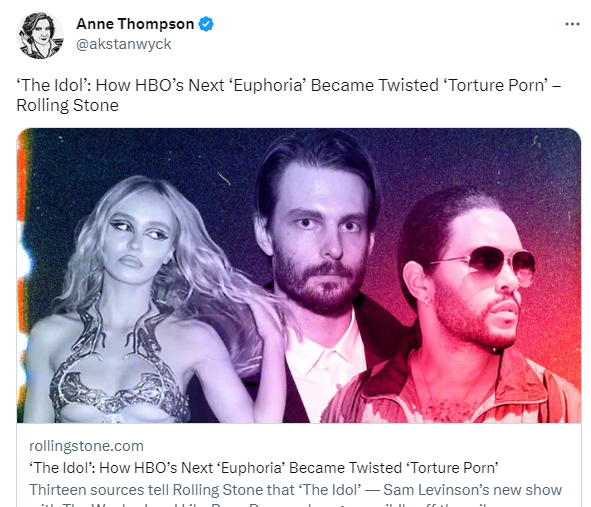The Idol: How HBO Show Hyped As The Next ‘Euphoria’ Became Twisted ‘Torture Porn’?
The latest HBO show, “The Idol,” marketed as the subsequent “Euphoria,” has generated considerable buzz in the television industry. Some critics and viewers have called the program “torture porn” due to its violent and explicit content. This article examines how “The Idol” became twisted “torture porn” and the controversy surrounding its acceptability.
The Idol” Hyped As The Next “Euphoria”

“Euphoria” made waves in the television industry due to its realistic and graphic depiction of adolescent life. The show was praised for its unflinching portrayal of sensitive topics such as drug abuse, mental health, and sexuality. This heightened anticipation for “The Idol,” which was promoted as the successor to “Euphoria.” A group of high school students is depicted navigating the pressures of social media, bullying, and fame.
Read More: Who is Billy Idol? Another Celebrity Hoax Being Spread About the Musician!
Controversy Surrounding The Show’s Content

The controversy surrounding “The Idol” stems from its violent and explicit content. Some critics and viewers have labeled the show “torture porn” due to its graphic depictions of self-mutilation, rape, and torture. This term is frequently used to describe films and television programs that feature gratuitous violence and suffering for entertainment purposes.

The debate surrounding “The Idol” focuses on whether or not the program is too disturbing and graphic. According to proponents of the show’s content, it accurately depicts modern life and the struggles young people face today. They argue that these issues should not be sugarcoated or censored because they are a part of reality. On the contrary, critics assert that graphic content is harmful and unnecessary. They contend it can be traumatic for trauma survivors and desensitize viewers to violence.
Creator Speaks Out: Unexpected Response
HBO and the show’s creators have responded to the controversy surrounding “The Idol.” The show’s creators argue that graphic content is necessary for storytelling and reflects the contemporary world in which young people live. The show can spark meaningful conversations and draw attention to these issues. HBO has also defended the show’s content, stating that it meets their programming requirements.
Read More: “Cassie, Denny, and Will -Crucial Parts of the “Entertainment Tonight” Promoted For S42
In addition, there are arguments for and against censorship of the show. According to proponents of the show’s content, censorship would be a form of artistic repression and prevent meaningful conversations from occurring. They argue that viewers can avoid the program if they find it upsetting. On the contrary, critics say censorship could protect vulnerable viewers from harm.
“The creators and producers of ‘The Idol’ have been working hard to create one of HBO’s most exciting and provocative original programs. Unfortunately, the initial approach on the show and production of the early episodes did not meet HBO standards, so we chose to make a change,” HBO told IndieWire in a statement. “Throughout the process, the creative team has been committed to creating a safe, collaborative, and mutually respectful working environment. Last year, the team made creative changes they felt were in the best interest of both the production and the cast and crew. We look forward to sharing ‘The Idol’ with audiences soon.”
Read More: Is Ellie Gay In The Last Of Us Game? Here Is All You Need To Know
Final Words
In conclusion, “The Idol” has become contentious due to its graphic nature and the controversy surrounding its suitability. Others argue that the show is harmful and unnecessary, despite claims by some that it is a realistic depiction of modern life that can spark important conversations. It is ultimately up to the viewer to decide whether or not to watch “The Idol,” but it is important to consider the content’s potential impact. The controversy surrounding “American Idol” highlights the ongoing discussion regarding the acceptability of explicit content in the media and the role of censorship in protecting viewers.

